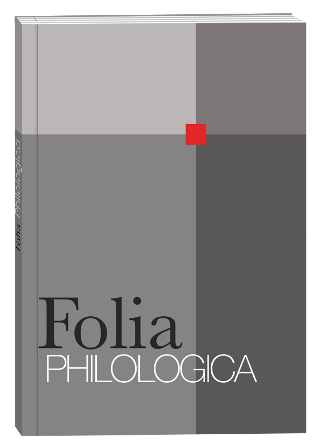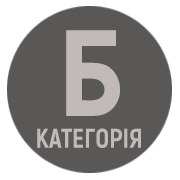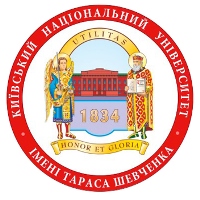THE TERMINI DICTIONARY OF THE HUNGARIAN LANGUAGE CONTAINING LOANWORDS FROM THE CARPATHIAN BASIN
DOI:
https://doi.org/10.17721/folia.philologica/2024/8/1Keywords:
Hungarian language, language varieties, loanwords, online dictionary, Termini Dictionary, Transcarpathian Hungarian language varietyAbstract
The Termini Hungarian–Hungarian Dictionary and Database is a perfect example of modern-day online dictionaries which aim to preserve the language varieties of the Hungarian minorities living in the neighbour states of Hungary, including Ukraine, Romania, Serbia, Slovenia, Croatia, Austria and Slovakia. The aim of the present article is to provide an introduction to the material of the Termini Dictionary, while shedding light on the importance of codification and preservation of the lexical borrowings from minority language varieties across the Carpathian Basin. Online dictionaries are useful tools in corpus linguistics because they are easy to update, thus they contain neologisms and other newly coined vocabulary elements that emerge as a result of linguistic and social changes. If the Hungarian language is taken into consideration, it underwent a great amount of changes in the previous century due to the Treaty of Trianon (1920), which split the territory of the Kingdom of Hungary into several pieces after World War I. As a consequence, many people of the Hungarian nationality moved to the neighbouring countries, but they kept their Hungarian identity and mother tongue. However, the language use of the Hungarian minority groups living in the states of the Carpathian Basin is significantly different in terms of vocabulary elements as compared to the standard Hungarian language variety spoken within the borders of present-day Hungary. The main difference is that the language varieties of Hungarian minorities are affected by the state languages of those countries where they live since the Treaty of Trianon. An example of such language varieties is the one spoken by the Hungarians in Transcarpathia, Ukraine. They frequently borrow words from the Ukrainian state language during their everyday communication. The novelty of the Termini Hungarian–Hungarian Dictionary and Database lies in the fact that although state language borrowings are getting more and more recognition in the two recent decades, but no other Hungarian dictionaries exist, which could provide such a comprehensible outline of minority language use. As of December 2024, the Termini Dictionary contains 5,577 entries, out of which 1,123 belong to the Transcarpathian variety of the Hungarian language. Therefore, the influence of the Ukrainian state language on the language use of the Hungarian minority in Ukraine is unquestionable, and the Termini Dictionary is a helpful tool in keeping record of the contact between the Hungarian and Ukrainian languages.
References
Baran, Ye. (2009). Leksychni hunharyzmy u tvorakh ukrainskykh pysmennykiv Zakarpattia [Lexical Hungarisms in the works of Ukrainian writers of Transcarpathia]. Ukrainska mova – Ukrainian Language, 2, 56–69 [in Ukrainian].
Bárány, E., Beregszászi, A., Dudics, K., & Gazdag, V. (2022). A kárpátaljai magyar nyelvhasználat regionális jegyeiről és az ezekhez fűződő beszélői attitűdökről [About the regional features of the Transcarpathian Hungarian language and the attitudes of speakers related to them]. Movoznavchyi visnyk: zbirnyk naukovykh prats – Linguistic Bulletin: scientific periodical, 33, 47–59. DOI: https://doi.org/10.31651/2226-4388-2022-33-47-59 [in Hungarian].
Csernicskó, I., & Márku, A. (2021). Ízelítők a Termini magyar–magyar szótár kárpátaljai anyagából [Samples of the Transarpathian material of the Termini Hungarian–Hungarian Dictionary]. Magyar Nyelvőr – Hungarian Language Protector, 145(4), 417–431. DOI: https://doi.org/10.38143/Nyr.2021.4.417 [in Hungarian].
Karmacsi, Z., Márku, A., & Csurman-Puskás, A. (2022). The Expedience of the Termini Online Hungarian–Hungarian Dictionary in the Process of Teaching Hungarian as a Foreign Language (in Transcarpathia). Acta Academiae Beregsasiensis, Philologica, 1 (2), 233–255. DOI: https://doi.org/10.58423/2786-6726/2022-2-233-255
M. Pintér, T. (2019). Magyar nyelv a határon: A Termini magyar–magyar szótár (1. rész) [Hungarian at the frontier: The Termini Hungarian–Hungarian Dictionary (Part 1)]. Magyar Nyelv – Hungarian Language, 115(3), 333–347. DOI: https://doi.org/10.18349/MagyarNyelv.2019.3.333 [in Hungarian].
M. Pintér, T., P. Márkus, K., & Benő, A. (2023). Research Report: Termini Online Hungarian Dictionary and Database (TOHDD): A Dictionary for Hungarian Varieties Spoken in the Carpathian Basin. Acta Universitatis Sapientiae, Philologica, 15 (2), 166–181. DOI: https://doi.org/10.2478/ausp-2023-0023
Váradi, K. (2023). Kétnyelvűséghez fűződő attitűdök vizsgálata többnyelvű környezetben élő főiskolai filológus hallgatók körében [Examining attitudes towards bilingualism among philology college students living in a multilingual environment]. Argumentum – Argument, 19, 88–123. DOI: https://doi.org/10.34103/ARGUMENTUM/2023/6 [in Hungarian].
Váradi, K. (2024). Nyelvészet és gazdaságtudomány találkozása a Termini online szótár kárpátaljai kölcsönszóanyagának alapján [The intersection of linguistics and economics based on a selection of loanwords from the Termini Online Dictionary]. In: I. Csernicskó et al. (eds.). Digitális gazdaság és fenntartható fejlődés: a pénzügy, számvitel, menedzsment, valamint társadalom- és viselkedéstudomány legújabb trendjei című IV. Nemzetközi Gazdaságtudományi Konferencia tudományos anyagai – Digital economy and sustainable development: Emerging trends in finance, accounting, management and social & behavioural sciences. Proceedings of the 4th International Scientific and Practical Conference. Berehove: Ferenc Rákóczi II Transcarpathian Hungarian College of Higher Education, 394–397 [in Hungarian].









